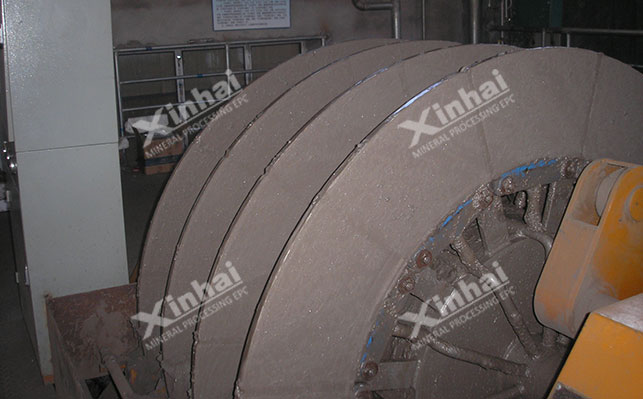
15311826613
Click to add WeChatAs an important strategic resource, high-purity quartz sand is an important raw material in the fields of optical fiber communications, microelectronics, solar energy and other fields. Quartz ore contains many impurities and generally coexists with a variety of impurities. Among them, the common impurity mineral iron tail , so iron removal and purification of quartz sand is the key. The editor below will sort out the production process of high-purity quartz sand for iron removal!
The current common quartz sand iron removal production processes mainly include: mechanical scrubbing iron removal, magnetic separation iron removal, flotation iron removal, acid leaching iron removal, ultrasonic iron removal and microbial iron removal.

The mechanical scrubbing method of quartz sand relies on mechanical external force and the friction between mineral particles. It is accomplished by collision and friction to remove the film iron on the surface of quartz sand and the iron-containing impurities adhering to its surface. There are two mechanical scrubbing methods: rod friction scrubbing and mechanical scrubbing. Which one to choose depends on the properties of quartz sand ore.

Quartz sand magnetic separation iron removal includes dry selection and iron removal. There are two types of wet separation for iron removal. Among them, wet magnetic separation mainly uses a wet strong magnetic separator, which can remove weakly magnetic impurity minerals such as hematite, limonite and biotite including conjoined particles to the greatest extent (using Wet type strong magnetic separator is selected above 10,000 Oersted); the weak magnetic separator is used to select strong magnetic materials mainly composed of magnetite. Minerals, but this iron removal method consumes a lot of power, the medium is easy to wear, consumes a lot of production water, and is difficult to maintain. Dry magnetic separation often uses a dry magnetic separator to remove iron. Its process is easy to operate and its operation and maintenance costs are lower than that of the wet type.

There are three types of quartz sand flotation iron removal methods. They are the method with fluorine and acid, the method without fluorine and acid, and the method without fluorine and acid. Among them, the fluorine-acid method is widely used because of its good flotation effect, easy control, and stable indicators. However, fluoride ions have a great corrosive effect on the land and the surrounding ecological environment; the advantage of the fluorine-free and acid method is that it avoids the use of fluoride ions that have a destructive effect on the environment, and the production indicators are stable, but the strong acid has a corrosive effect on the mineral processing equipment. It cannot be ignored; the fluorine-free and acid-free method creates a high-concentration slurry flotation environment under natural pH conditions through the reasonable deployment of anionic and cationic collectors to achieve the purpose of preferential flotation of impurity minerals. However, because this method has strict requirements on raw sand processing and slurry environment, it is not easy to control in production, and it has not been widely used at present.

The acid leaching iron removal method utilizes quartz sand that is insoluble in Characteristics of acid (except HF), and iron-containing impurities are easily dissolved by acid, so that good quartz sand concentrate can be obtained. Generally, the commonly used acids for pickling quartz sand include sulfuric acid, hydrochloric acid, nitric acid and hydrofluoric acid.
The ultrasonic iron removal method uses ultrasonic technology to remove secondary film iron on the surface of quartz particles. Generally, the ultrasonic treatment lasts for about 10 minutes, and the iron removal rate is It can reach 46% to 70%. When applying ultrasonic iron removal, attention must be paid to promptly removing the waste liquid to prevent secondary adhesion from reducing the iron removal effect. Ultrasonic iron removal is still relatively expensive for cheap resources such as silica sand, and it is still difficult to apply it in large-scale mineral processing plants, but it is possible to be used in production fields that require high purity and low dosage.
The microbial iron removal method uses microorganisms to leached thin film iron or disseminated iron on the surface of quartz sand particles to obtain good quartz sand concentrate. The process is a new technology and is currently in the experimental stage. Some studies have shown that microorganisms such as Aspergillus niger, Penicillium, Trichoderma pyriformis, Pseudomonas, Bacillus, Bacillus polymyxa, Pediococcus acidilactici and other microorganisms can be used to leach iron oxide from the quartz surface.
The above are several common high-purity quartz sand iron removal production processes. In the actual mineral processing plant, you cannot blindly choose. It should be determined based on the impurity content of the quartz sand. Therefore, the editor recommends that you proceed first. Ore dressing test, through experimental analysis, design and customize a suitable quartz sand production process plan.